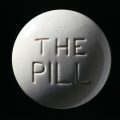On September 2, 1995, I experienced a cerebrovascular accident (CVA, also called a stroke), affecting my mid-brain and pons Varolli.
Here is a little background information. I was 33 years old at the time and in fairly good health. My life was very busy and stressful. I was the nurse in charge of a busy NICU (neonatal intensive care unit) and on call 24/7, involved with Scripture Union/youth group for primary school children, and in charge of the Sunday School at church. I was also very involved with my family and helping my sister with her newborn baby.
At this time, I had been taking hormonal contraception for about 2 years with no untoward effects. Three months prior to the stroke, I contracted bronchitis, which I just couldn’t seem to shake. I also experienced occasional episodes of fainting and headaches. Having been prone to headaches most of my life, and being as busy as I was, the symptoms were put down to stress.
The few days before the actual stroke, I experienced debilitating headaches. At this stage, I was beginning to think that it was time for some medical intervention, but being busy, this never happened.
The morning of the actual stroke began like most mornings, feeling a little tired, but otherwise okay. In the shower, that morning, I felt extremely faint and in order to protect myself from injury, I lay down on the bathroom floor. At this time, I was also feeling extremely dizzy and nauseous, as one would, if their blood pressure was very low.
I then felt like what can only be described as an explosion in my head. At this point I knew that there was something very wrong. I managed to lift myself up to the basin and only had use of the left side of my body. In the mirror, above the basin, I could see that one side of my face was drooping. I dragged myself to the phone and called my sister for help.
The local GP was our first stop, where on examination, the diagnosis was made that I had had a stroke and arrangements were made for admission to hospital. There began a new chapter in my life. It must be noted that during this time, I was aware of what was going on. I still had a dreadful headache and severe nyastgmus (involuntary, repetitive eye movements), as well as hiccups. Various tests were done, including blood tests, a lumbar puncture and CT scan, which confirmed the diagnosis of a CVA.
I started experiencing breathing difficulties during the night, and the following morning I was taken to the intensive care unit, where I was ventilated for 5 days. Once extubated, I was transferred to a medical ward. The nyastgmus was still very severe and the weakness on the right side of my body evident. I also could not swallow, not even my own saliva. A nasogastric tube (from my nose down into my stomach) was put in, and this was used to ‘feed’ me.
The next 6 weeks were compromised of more tests, speech therapy to help me to learn to swallow again, and physiotherapy. In essence, I was like a baby, having to learn to walk, swallow and talk again. Fortunately, my speech wasn’t really affected that badly and I was generally coherent. Amidst my frustrations, the nyastagmus persisted. Eventually I felt that I would recuperate better at home, but I still couldn’t swallow, so a gastrostomy tube was inserted (a tube from outside my abdomen straight into my stomach). This was at my request as I wasn’t ‘happy’ coming home with a nasogastric tube. No one knew when or if I would ever feed orally again!
At home, I continued with my rehabilitation and slowly, after about 3 months, I was able to start eating orally again. It took 6 months for me to go back to work. Since then I’ve been able to lead a fairly normal life.
There are a few disabilities that I’ve learnt to live with and overcome. One is that I have diminished pain and temperature sensation on the left side of my body. My sense of balance has also affected and my swallowing coordination goes haywire every now and again. The nyastgmus is also evident at times, but usually only when I’m very tired.
As to the cause of the stroke, a final diagnosis was never really made, but the medical team involved attributed it to an arteriovenous malformation (an abnormality of the arteries and veins in an area of the brain), complicated by chronic bronchitis, resulting in ‘sticky’ platelets, stress and artificial hormones.
On a bright note, there is life after a stroke: one just needs to work hard to achieve it. Would I ever take hormones again? No- the thought of experiencing another CVA scares me.
Real Risk Study: Birth Control and Blood Clots
Lucine Health Sciences and Hormones Matter are conducting research to investigate the relationship between hormonal birth control and blood clots. If you or a loved one have suffered from a blood clot while using hormonal birth control, please consider participating. We are also looking for participants who have been using hormonal birth control for at least one year and have NOT had a blood clot, as well as women who have NEVER used hormonal birth control. For more information or to participate, click here.
















A stroke is a serious, life-threatening medical condition that occurs when the blood supply to part of the brain is cut off. Thank you for sharing your insights. Great post!